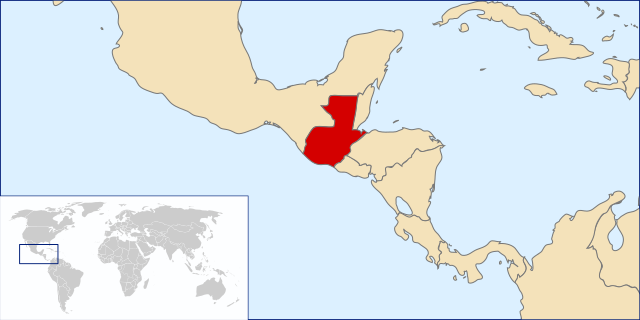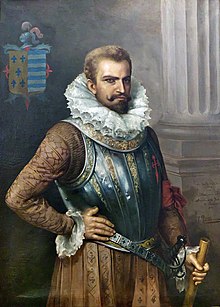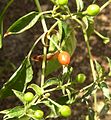Portal:Guatemala
Portal:Guatemala
Guatemala, officially the Republic of Guatemala, is a country in Central America. It is bordered to the north and west by Mexico, to the northeast by Belize, to the east by Honduras, and to the southeast by El Salvador. It is hydrologically bordered to the south by the Pacific Ocean and to the northeast by the Gulf of Honduras.
The territory of modern Guatemala hosted the core of the Maya civilization, which extended across Mesoamerica; in the 16th century, most of this was conquered by the Spanish and claimed as part of the viceroyalty of New Spain. Guatemala attained independence from Spain and Mexico in 1821. From 1823 to 1841, it was part of the Federal Republic of Central America.
For the latter half of the 19th century, Guatemala suffered instability and civil strife. From the early 20th century, it was ruled by a series of dictators backed by the United States. In 1944, authoritarian leader Jorge Ubico was overthrown by a pro-democratic military coup, initiating a decade-long revolution that led to social and economic reforms. In 1954, a US-backed military coup ended the revolution and installed a dictatorship.
From 1960 to 1996, Guatemala endured a bloody civil war fought between the US-backed government and leftist rebels, including genocidal massacres of the Maya population perpetrated by the Guatemalan military. The United Nations negotiated a peace accord, resulting in economic growth and successive democratic elections.
Guatemala's abundance of biologically significant and unique ecosystems includes many endemic species and contributes to Mesoamerica's designation as a biodiversity hotspot.
Although rich in export goods, around a quarter of the population (4.6 million) face food insecurity. Other extant major issues include poverty, crime, corruption, drug trafficking, and civil instability.
With an estimated population of around 17.6 million,0 Guatemala is the most populous country in Central America, the 4th most populous country in North America and the 11th most populous country in the Americas. Its capital and largest city, Guatemala City, is the most populous city in Central America. (Full article...)

The Guatemala syphilis experiments were United States-led human experiments conducted in Guatemala from 1946 to 1948. The experiments were led by physician John Charles Cutler, who also participated in the late stages of the Tuskegee syphilis experiment. Doctors infected 1,300 people, including at least 600 soldiers and people from various impoverished groups (including, but not limited to, sex workers, orphans, inmates of mental hospitals, and prisoners) with syphilis, gonorrhea, and chancroid, without the informed consent of the subjects. Only 700 of them received treatment. In total, 5,500 people were involved in all research experiments, of whom 83 died by the end of 1953, though it is unknown whether or not the inoculations were responsible for all these deaths. Serology studies continued through 1953 involving the same vulnerable populations in addition to children from state-run schools, an orphanage, and rural towns, though the intentional infection of patients ended with the original study.
On October 1, 2010, the U.S. President, Secretary of State and Secretary of Health and Human Services formally apologized to Guatemala for the ethical violations that took place. Guatemala condemned the experiment as a crime against humanity. Multiple unsuccessful lawsuits have since been filed in the US. (Full article...)
- ... that the Central American government voted for annexation to the First Mexican Empire after a request from Regent Agustín de Iturbide?
- ... that the Adelaide L. T. Douglas House, built for a New York City socialite, housed the United States Olympic Committee before being sold to Guatemala?
"Fuiste Tú" ("It was you") is a Latin pop song by Guatemalan recording artist Ricardo Arjona, released on 7 February 2012 as the second single from his thirteenth studio album, Independiente (2011). Featuring additional lead vocals by Guatemalan singer Gaby Moreno, the song was written by Arjona, who produced it with longtime collaborators Dan Warner and Lee Levin under their stage name Los Gringos. Additional work on the recording was done by Puerto Rican singer-songwriter Tommy Torres.
Lyrically, "Fuiste Tú" rounds the concept of recreating "the battle on a couple when someone starts to say 'is the beginning of the end'". The song became the second consecutive single from Independiente to reach the top ten in the US Billboard Top Latin Songs, and the second single from the album to top both the Latin Pop Songs and Tropical Songs charts. "Fuiste Tú" performed well on several national charts from Latin America, including reaching No. 1 on Venezuela, and No. 6 on Mexico. The single was nominated for Song of the Year and Record of the Year at the 13th Annual Latin Grammy Awards. (Full article...)- ... that the Guatemalan labor organization Committee for Peasant Unity once led a strike that forced a minimum wage increase of nearly 200%?
In a protracted conflict during the Spanish colonization of the Americas, Spanish colonisers gradually incorporated the territory that became the modern country of Guatemala into the colonial Viceroyalty of New Spain. Before the conquest, this territory contained a number of competing Mesoamerican kingdoms, the majority of which were Maya. Many conquistadors viewed the Maya as "infidels" who needed to be forcefully converted and pacified, disregarding the achievements of their civilization. The first contact between the Maya and European explorers came in the early 16th century when a Spanish ship sailing from Panama to Santo Domingo was wrecked on the east coast of the Yucatán Peninsula in 1511. Several Spanish expeditions followed in 1517 and 1519, making landfall on various parts of the Yucatán coast. The Spanish conquest of the Maya was a prolonged affair; the Maya kingdoms resisted integration into the Spanish Empire with such tenacity that their defeat took almost two centuries.
Pedro de Alvarado arrived in Guatemala from the newly conquered Mexico in early 1524, commanding a mixed force of Spanish conquistadors and native allies, mostly from Tlaxcala and Cholula. Geographic features across Guatemala now bear Nahuatl placenames owing to the influence of these Mexican allies, who translated for the Spanish. The Kaqchikel Maya initially allied themselves with the Spanish, but soon rebelled against excessive demands for tribute and did not finally surrender until 1530. In the meantime the other major highland Maya kingdoms had each been defeated in turn by the Spanish and allied warriors from Mexico and already subjugated Maya kingdoms in Guatemala. The Itza Maya and other lowland groups in the Petén Basin were first contacted by Hernán Cortés in 1525, but remained independent and hostile to the encroaching Spanish until 1697, when a concerted Spanish assault led by Martín de Ursúa y Arizmendi finally defeated the last independent Maya kingdom. (Full article...)Guatemala is divided into 22 departments (departamentos) and sub-divided into about 332 municipalities (municipios).
The departments include:


Here are some things you can do for WikiProject Guatemala:
- Create requested articles:
- El Viejo Palmar -- Village south of Quetzaltenango, hit by a volcanic eruption
- Expand "stub" and "start" articles:
- Assess the importance of articles:
| This is a list of recognized content, updated weekly by JL-Bot (talk · contribs) (typically on Saturdays). There is no need to edit the list yourself. If an article is missing from the list, make sure it is tagged (e.g. {{WikiProject Guatemala}}) or categorized correctly and wait for the next update. See WP:RECOG for configuration options. |
The following Wikimedia Foundation sister projects provide more on this subject:
-
Commons
Free media repository -
Wikibooks
Free textbooks and manuals -
Wikidata
Free knowledge base -
Wikinews
Free-content news -
Wikiquote
Collection of quotations -
Wikisource
Free-content library -
Wikiversity
Free learning tools -
Wikivoyage
Free travel guide -
Wiktionary
Dictionary and thesaurus
The current date and time in Guatemala is Wednesday, April 17, 2024, 18:27.
News media:
- The Guatemala Times
- La Prensa Libre (in Spanish)
- Wikinews Guatemala portal






























































